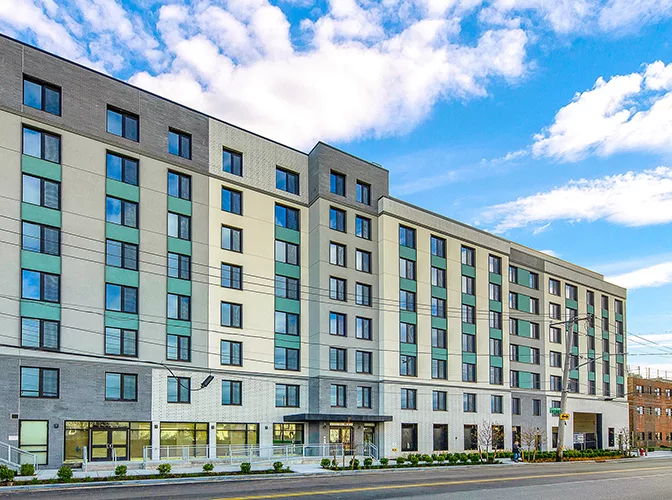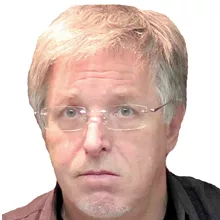More than 10 years ago, at the end of October 2012, Hurricane Sandy took the lives of 233 people in New York, the District of Columbia, Maryland, New Jersey, New England, Canada and the Caribbean. About 97 died in the New York area, including 43 in Queens and Staten Island. Four to six feet of water roared into these areas, accompanied by flying objects and winds that, at their peak, reached 115 miles per hour.
Weather events are full of uncertainties and risks. You may look out your window and decide that the warnings of authorities and weather people are precautionary, and you might step out during a lull in the storm to look around. A 23-year-old woman named Lauren Abraham did exactly that, snapping photos of the storm’s effects near her home on 134th Street. Sadly, she stepped on a downed electrical line and was electrocuted.
When the power went out in Glenda Moore’s home in Staten Island, she strapped her two toddlers, Connor and Brandon, into the car seats of her SUV and drove toward a shelter she had heard about on the news. However, the water flooded onto Capodanno Boulevard, submerging the car, which stalled out.
Attempting to finish the journey on foot, she took the boys out of their car seats, carrying the 2-year-old and holding hands with 4-year-old Connor. Tragically, surging water and high winds ripped both children from her grip. They were swept away in the flood and later found deceased.
Another man in Manhattan was walking along a sidewalk when unexpected flood waters washed him into the basement of a building, where he ended up drowning.
Others died from falling trees and collapsing buildings. Some tried to be prudent, heading downstairs for safety. At least five did that, mostly older people in Queens, who perhaps did not appreciate how much water was rushing toward their homes and how quickly it would fill their basements. They drowned.
Others thought they should turn off the gas to prevent accidental fires. Henry Sullivan of Beach 136th Street in Rockaway Park tried this but drowned. Nancy Sorenson of Beach 124th Street also tried this, but she accidentally sustained a serious gash in the process and bled to death.
Affordable Housing at Queens’ Rockaway Beach
Nothing can bring these people back, but I’m re-telling this sorrowful story in the hopes that we can at least learn important lessons from these events. The architects and engineers who designed Beach Green Dunes II are also working on a much bigger nearby project in the Rockaway Beach area seem to have done their homework.
Sites are being elevated, critical electrical, mechanical and other systems are located on the second floor or higher, and storm infrastructure is being taken seriously. When the floods do arrive, the water hopefully will not rise so rapidly in basements and underground parking lots because they have been designed using porous surfacing, allowing water to quickly drain back into the earth and the groundwater system.
Of course, the more critical lessons involve the root causes of extreme weather, and these projects certainly do that. They also address citizen health, quality of life and housing affordability in a time of dire need in New York.
Tenants in the 127 affordable studio, one-bedroom and two-bedroom units at Beach Green Dunes II can cool their apartments with their ground-source heat pumps, which would cost about $10 per month. They can also open the windows and let the ocean breezes blow through.
Combining a Passive House building envelope, an underground geothermal HVAC system and solar panels on the roof, the project provides one of the best green technology combinations anywhere.
“Gas is in the past for us,” says Andrew Wohl, MEP director at L+M Development Partners, the New York developer, builder and operator of Beach Green Dunes II. “We do mostly affordable housing; in New York, it costs about 10% more to build geothermal and 10% more to meet the Passive House standard. Passive House makes geothermal easier, and geothermal makes Passive House easier.”
The total of 36 geothermal boreholes bears out this assertion at a depth of about 450 feet needed for the project’s 127 homes.
Wohl is demonstrably proud of Beach Green Dunes II, which was completed a couple of years ago, and excited about future projects now under development — particularly a much larger development planned for across the street. It will be called Arverne, a geothermal district energy community of some 2 million square feet, including retail, commercial, residential multiunit buildings, townhouses, bungalows, a hotel and more.
Not only will it feature the same geothermal/net-zero/solar photovoltaic (PV) model, but there is a likelihood that Arverne and other future L+M projects will include heat pump water heaters, some batteries for the PV system, possibly heat pumps that employ carbon dioxide refrigerant and, at some sites, wastewater energy recovery.
The latter is a long-time coming, emerging field using heat exchangers and heat pumps to take advantage of thermal energy based on temperature differentials between above-ground air and drain water in sewer pipe or nearby trunk lines. It is currently being used effectively at several sites in Washington; Vancouver, Canada; Europe and elsewhere.
I’ve been asked why I so often write about projects in New York, California and Texas; the answer is that these are huge markets taking risks. They take pride in their leadership with progressive technologies and demanding regulations and standards. If it works in these places, other jurisdictions will follow.
“We get many inquiries about how we build,” Wohl says. “We do numerous tours and presentations.”
More on the Gradient Window Heat Pump
As mentioned before, the challenges are also enormous in the biggest cities. New York City estimates up to 70% of its carbon and methane emissions come from buildings. Of course, assuming all new construction was built for low emissions, that would only take care of about 3% or 4% of the city’s buildings each year.
Therefore, it has established some brutal regulations for existing buildings, and its developers are feverishly trying to retrofit the entire metropolis.
Last month, I mentioned a window-heat-pump product called Gradient Comfort that might help with some of these retrofits, and I’ve since talked with the creator of the product. Although the company calls it a self-install DIY product, a quick manual review reveals that some people will likely contact HVAC professionals for help with the installation; CEO Vince Romanin confirmed this.
“There is a lot of interest from multifamily project management, and we’re working with them,” he explains. “We’re extending our user app to become a B2B portal. Building superintendents like it because responding to a client emergency is within their control. It’s a quick drop-in replacement for malfunctioning units. Other kinds of replacements can require a long, expensive process.”
The first big order for Gradient came in August last year when it won the Clean Heat For All Challenge created by the New York City Housing Authority (NYCHA), the New York State Energy Research and Development Authority and the New York Power Authority. The prize was an initial purchase of 10,000 units.
The challenge was created to enable rapid, low-cost electrification of space heating in occupied multifamily buildings. NYCHA discovered that mini-splits often involve electrical system upgrades, refrigerant piping and drilling through walls. These hurdles don’t work in some projects and with some budgets.

An experienced tech can install the Gradient unit in less than an hour. It provides heating and 9,000 BTUs of cooling and is designed for rooms up to 450 square feet using 120-volt electrical service. It meets UL, Energy Star and ETL standards.
Version 2 has better cold-weather performance; future enhancements are expected to include R290 refrigerant rather than the R32 now being used. “It will be hermetically sealed in the factory because R290 (propane) is flammable,” Romanin says. “The supply chain for C02 compressors, expansion valves and so on is not sufficiently advanced as yet.”
Unlike a window air-conditioning (AC) unit, the Gradient product offers what Romanin calls a “fundamentally better experience for the user in terms of noise and aesthetics.” The product creates a shelf at the bottom of the window with mechanicals hanging below the shelf on the inside and outside.
The first of the NYCHA installations was at Woodside Houses in Queens County. The agency operates more than 300 buildings, totaling 177,000 apartments. It also has gathered interest from agencies in Jersey City, Boston and Seattle for about 24,000 apartments.
Romanin holds a mechanical engineering/heat transfer doctorate from the University of California, Berkeley and describes himself as a thermo-nerd. He encountered slow progress when he first started looking at ways to decarbonize the building sector and notes that some of our cities are built in areas that aren’t livable without air conditioning.
He predicts that we will need 250% more AC by 2050 than we have today, adding that since its increased adoption in the middle of last century, air conditioning may have reduced heat wave deaths by 70%. Romanin founded Gradient in 2017. Obviously, it could become a big success.
Other Heat Pump News
I was going to write about heat pumps based on press releases I received from two well-known HVAC manufacturers, one in Germany and one in the United States, but after reviewing the specifications, I decided against it.
Although they claim to offer good performance, one of these new products has been introduced using a refrigerant with a very high global-warming potential (GWP), which to me means it is obsolete before it starts. I can name several competing products using natural refrigerants that do essentially the same thing.
The other announcement talks about existing low-temperature products it sells, promoting specifications that are mediocre at best, and how the company is working on better products that will be more competitive temperature-wise and use more modern refrigerants. It’s good news, but I think readers are more interested in more developed products and projects using proven systems.
In the foregoing, L+M has built projects using modern green technology and met its emission, cost and quality of life objectives. Gradient is still somewhat new and may not be extensively adopted, but the indications are that it is essentially proven. Large numbers of units are being installed in New York, and it was declared the winner over other heat pump retrofit solutions.
Its refrigerant has a GWP of 466, and the soon-to-be-released version will be R290, which has a GWP of 3.
These companies are making technology happen in the built environment and taking the formidable challenge of climate change seriously. We now live in a time when there will be more Hurricane Sandys, more pandemics, more fires, floods, melting glaciers and so on.
Not one state in this country has not been impacted by the climate emergency. Congratulations to those who are making sincere and realistic efforts to create a better world.





